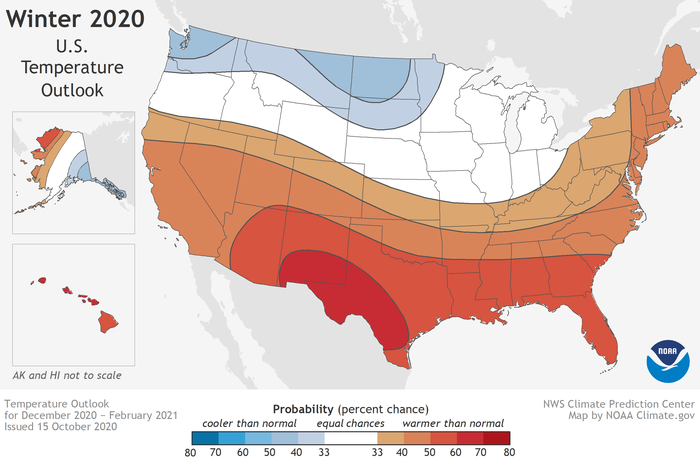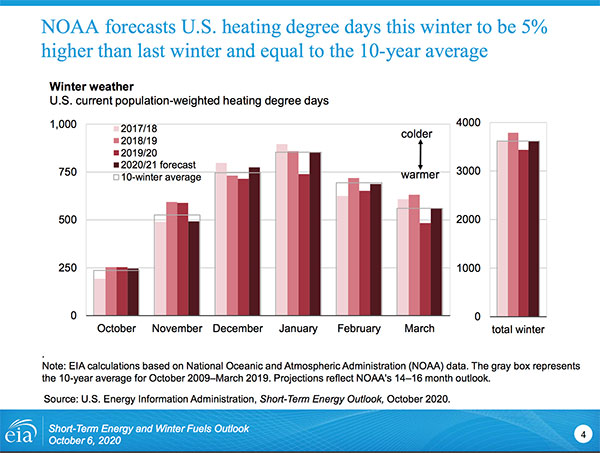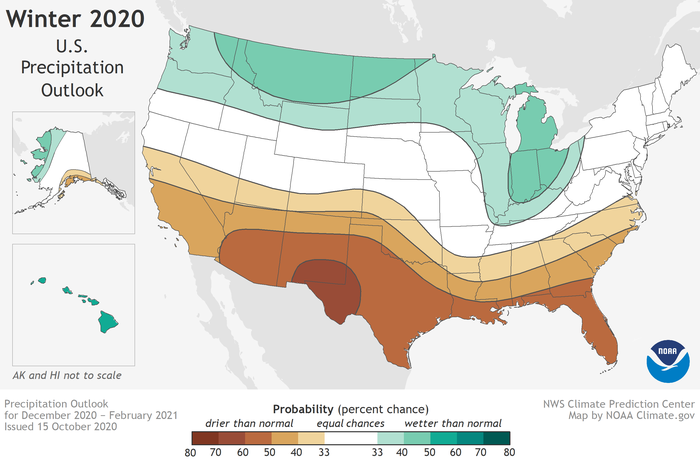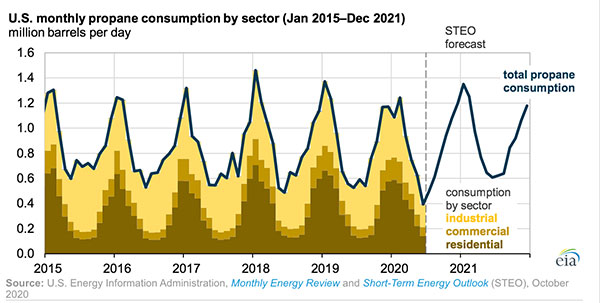What La Nina means for your winter weather forecast
The development of La Nina this year will wield its influence on winter weather conditions, say forecasters at the National Oceanic and Atmospheric Administration (NOAA), which released its U.S. winter outlook this month.
But what is La Nina and what does it mean for propane retailers? According to NOAA, La Nina is a natural ocean-atmospheric phenomenon marked by cooler-than-average sea surface temperatures across the central and eastern Pacific Ocean near the equator. In the U.S., forecasters say, La Nina typically leads to a cooler, wetter North and a warmer, drier South.
NOAA issued an advisory for La Nina in September. At the time, the agency was concerned more about La Nina’s impact on increased hurricane activity. Now, scientists say, La Nina will be in place from December 2020 through February 2021.
La Nina typically brings above-average precipitation and colder-than-average temperatures along the northern tier of the U.S., along with below-average precipitation and above-average temperatures across the South, NOAA reports.
NOAA says it’s also monitoring persistent drought during the winter months ahead, with more than 45 percent of the continental U.S. now experiencing drought. The western half of the U.S. and parts of the Northeast are currently facing drought conditions, NOAA says, and La Nina may contribute to expanded and intensifying drought in southern parts of the U.S. this winter.
The last La Nina appeared during the winter of 2017-18, NOAA says, and El Nino followed in 2018-19. Conversely, El Nino refers to a periodic warming in sea surface temperatures across the central and eastern Pacific Ocean near the equator. El Nino typically brings milder weather to the northern parts of the U.S. and wetter conditions across the southern U.S.
NOAA’s winter forecast follows that of the U.S. Energy Information Administration’s (EIA) Winter Fuels Outlook, which, owing to COVID-19-related impacts, anticipates more residential heating fuel consumption in the coming months due in part to more people working and attending school from home.
In its latest Short-Term Energy Outlook, the EIA expects 5 percent more U.S. propane consumption this winter compared to last winter, citing a cooler winter forecast. U.S. heating degree-days will be 5 percent higher than last winter and equal to the 10-year average, EIA had reported in its winter outlook.
EIA expects the increased heating demand will more than offset reduced demand for propane as a petrochemical feedstock by U.S. industry. EIA also expects less grain drying demand than last year.
AltaGas advances LPG export strategy
Canada-based AltaGas Ltd., as part of a joint venture with Japan’s Idemitsu Kosan Co. Ltd., is increasing its ownership interest in Petrogas Energy Corp. and boosting its propane export capabilities by acquiring a facility about 100 miles north of Seattle.
AltaGas is indirectly acquiring an additional 37 percent of Petrogas’ equity for total consideration of about $715 million. The company’s indirect ownership in Petrogas will increase to about 74 percent, with Idemitsu owning the remaining approximate 26 percent.
The agreement will allow AltaGas and Idemitsu to assume full ownership of Petrogas, one of the largest privately held midstream and logistics companies in North America with operations dating back to 1986. Learn more about Petrogas’ operations in the U.S.
A recommended listen
If you haven’t heard LP Gas’ most recent interview with Mark Rachal of Cost Management Solutions, we recommend that you take the 13 minutes of its running time to hear what the energy market analyst has to say about the propane supply and pricing environment.
We found it extremely interesting, especially as it pertains to the topics of propane-related infrastructure, the future of the oil market, massive propane-consuming plants in China and retailer best practices. You can access the video here.
Connect with LP Gas
As the winter heating season kicks into high gear, LP Gas would like to hear how your operations are faring, especially as the industry continues to navigate COVID-19. Please share your comments with Editor-in-Chief Brian Richesson. Email brichesson@northcoastmedia.net or call 216-706-3748.





















